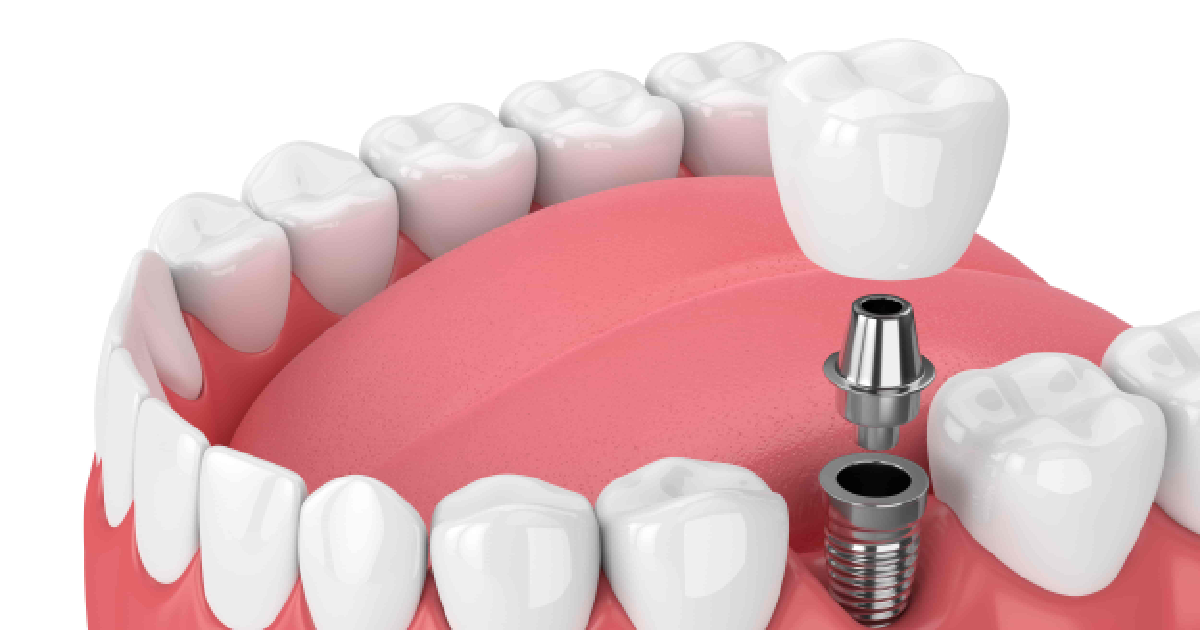If you’re missing one or more teeth, you may be trying to decide whether you should get a crown or a bridge. Each solution has benefits. In this post we discuss the two types of tooth replacement and what you may want to consider.
Tooth loss is a very common problem. Close to 70% of adults between the ages of 35 and 44 have lost at least one tooth! The percentage continues to rise with age.
The experts at Solomon Family Dentistry offer several options for replacing missing teeth. Two of the most popular choices are crowns and bridges. Both types of replacement are effective, but they are different. In this post, we discuss those differences and considerations to take into account as you decide what type of tooth replacement will work best for you.
The importance of replacing missing teeth
There are a few reasons you should consider replacing missing teeth. When there’s a gap, the teeth that surround the gap may shift. That can make it more difficult to keep your remaining teeth clean, or it can affect your bite. The shape of your face could change, as well.
You may find it more difficult to chew or speak with missing teeth. It could affect your nutrition, or make you unwilling to talk, even when you ordinarily would.
Finally, a missing tooth could eventually lead to bone loss. Each time you bite down, the roots of your teeth stimulate your jawbone, increasing blood flow. The blood nourishes your jawbone, keeping it healthy. Without the stimulation, the bone may begin to decay.
Dental crowns
A crown is a cap that looks like a natural tooth. It can be used with an implanted post, which replaces a missing tooth’s roots, or it can be used to cover and support a badly damaged tooth. Because this is a post about tooth replacement, we’ll be talking about crowns as they are used with implants.
Dental crowns with implants are considered the gold standard in tooth replacement, in large part because they provide the stimulation necessary to keep your jawbone healthy. Crowns are permanently placed, and you care for them exactly as you do your natural teeth — by brushing, flossing, and having regular dental checkups.
Dental bridges
A dental bridge “bridges” the gap left by a missing tooth or teeth. Sometimes bridges are called fixed removable dentures. When you have a bridge, your dentist places a crown on the teeth on either side of the gap. Those crowns hold the replacement tooth, which fits into the gap.
Bridges may be ceramic, porcelain, gold, alloy, or a combination of materials. A bridge prevents the teeth surrounding the gap left by a missing tooth from moving or shifting, which preserves the shape of your face and makes dental hygiene easier.
Dental bridges typically last anywhere from 5-15 years, with the average being around 10 years.
Considerations
Cost may be a factor if one type of tooth replacement is covered by your insurance and the other isn’t. Although the cost of a dental bridge is usually less up front, dental crowns may last longer.
Getting an implant and crown is a more invasive procedure than getting a bridge and the risk of complications is higher — but the process is overall very safe. It may take more visits spread over a longer period of time to get an implant and crown.
We suggest talking to your dentist about your options. We are happy to discuss the benefits and drawbacks of your options and take your circumstances into account as we make treatment suggestions.
If you’re missing a tooth or teeth, and would like to know more about your options for replacement, schedule an appointment at the Solomon Family Dentistry location most convenient for you.





